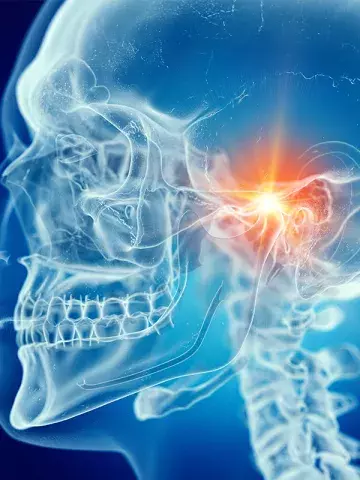New clinical guideline for managing chronic temporomandibular disorder-related pain
By Michael Doris MB BS
A new clinical practice guideline, published in the BMJ, aims to provide clear and evidence-based recommendations on the management of chronic pain associated with temporomandibular disorders (TMDs). As one of the most common causes of chronic pain, TMDs encompass pathology of the temporomandibular joint, muscles of mastication and adjacent structures.
Comprising patients who experience TMD, methodologists and expert clinicians, the international guideline development group recognised the need for effective management, given the wide range of interventions available.
The group based their guidelines on a systematic review and network meta-analysis of studies on available treatment options for chronic TMD pain. The systematic review included 59 interventions from 148 randomised controlled trials reporting on pain relief and 26 interventions from 33 trials reporting on physical functioning, which analysed 7867 patients and 1910 patients, respectively.
Selected patients predominantly included women aged 30 to 39 years with long-standing chronic TMD pain of moderate severity.
The interventions were measured against the following seven patient-important outcomes: pain relief, physical functioning, emotional functioning, role functioning, social functioning, sleep quality and adverse events.
The guideline made strong recommendations for physical therapies such as therapist-assisted mobilisation, manual trigger point therapy, supervised postural exercise, and supervised jaw exercise and stretching. Psychological therapies, including cognitive-behavioural therapy (with or without biofeedback) or relaxation therapy, also received strong support. Conversely, irreversible oral splints, discectomy and combination drugs of NSAIDs with opioids received strong recommendations against their use.
The authors of an editorial accompanying the guideline noted the challenges for healthcare providers in managing TMD, especially with the shortage of specialist therapists, pressures on healthcare system resources and the associated costs of treatment to patients. Digital technologies might offer a solution for the delivery of physical and psychological therapies, aligning with the increased familiarity among patients and clinicians with such services following the COVID-19 pandemic, they wrote.
Associate Professor Arun Aggarwal, a Consultant Neurologist at Concord Hospital and Rehabilitation and Pain Specialist at Royal Prince Alfred Hospital, Sydney, and Medical Advisor to the Trigeminal Neuralgia Association, said, ‘this review reinforces how difficult TMDs are to manage and shows that interventions that promote coping and encourage movement and activity are most effective for reducing chronic pain associated from TMD.’
He noted, however, that the review did not include anyarticles on the role of botulinum toxin in the treatment of TMD despite its clear efficacy in similar studies.
‘The benefit of the interventions studied in this review is relatively small,’ Associate Professor Aggarwal said, noting that he had expected ‘a greater reduction in pain for an intervention to be deemed clinically significant.’


